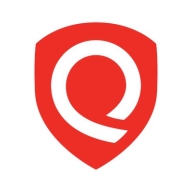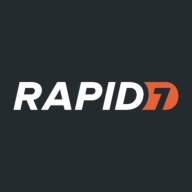

Surface Command and Qualys CyberSecurity Asset Management are competing in cybersecurity asset management. Surface Command may be preferable for those seeking cost-effectiveness and simplicity, while Qualys offers more extensive features for those needing in-depth analysis.
Features: Surface Command features an intuitive dashboard, quick integration capabilities, and seamless adoption into IT environments. Qualys CyberSecurity Asset Management provides extensive vulnerability assessment, automated inventory tracking, and robust security insights.
Ease of Deployment and Customer Service: Surface Command's deployment model is straightforward, while Qualys requires a more detailed process. Surface Command is noted for prompt support responses, whereas Qualys has a knowledgeable support team for handling complex queries.
Pricing and ROI: Surface Command is budget-friendly with a high ROI, suited for cost-conscious organizations. Qualys, though requiring higher initial investment, offers a substantial long-term return with its rich features enhancing security measures.
| Product | Market Share (%) |
|---|---|
| Qualys CyberSecurity Asset Management | 4.4% |
| Surface Command | 0.6% |
| Other | 95.0% |

| Company Size | Count |
|---|---|
| Small Business | 6 |
| Midsize Enterprise | 2 |
| Large Enterprise | 23 |
Qualys CyberSecurity Asset Management provides advanced real-time asset visibility, dynamic tagging, and External Attack Surface Management. It streamlines asset discovery and management using cloud agents and IP-based scanning, enhancing risk management and software lifecycle tracking.
Qualys CyberSecurity Asset Management offers a comprehensive solution for managing asset inventories and tracking software lifecycle states. It facilitates network visibility and supports zero-day vulnerability solutions, enhancing security posture through efficient monitoring. Users benefit from its cloud-based interface, which provides in-depth asset configurations and insights. Key features include automated vulnerability scanning and unauthorized software management, reducing manual efforts. The platform also emphasizes the importance of timely remediation and ongoing risk mitigation across multiple environments. Despite its strengths, users note the need for enhanced integration with additional CMDBs beyond ServiceNow, as well as cost efficiency improvements. Requests also include better report customization, more scan control, and a simplified UI.
What are the key features of Qualys CyberSecurity Asset Management?In industries like finance, healthcare, and manufacturing, Qualys CyberSecurity Asset Management enhances asset control by offering visibility into hardware and software configurations. It aids in maintaining security compliance and identifying unauthorized software, crucial for sectors with strict regulatory requirements.
Surface Command is a dynamic tool designed to optimize command center operations, providing valuable insights and efficient management capabilities. It caters to experts looking to streamline processes and improve task delegation in complex environments.
Designed for experienced users, Surface Command offers comprehensive solutions that address high-level operational challenges. It enables enhanced situational awareness and decision-making through its robust features, making it vital for managing and coordinating tasks efficiently. However, there is room for improvement in areas such as integration capabilities and user customization options.
What are the key features of Surface Command?In logistics, Surface Command can be deployed to enhance fleet management and supply chain coordination, while in emergency services it supports real-time incident response. Its adaptability makes it useful in telecommunications, optimizing network operations and maintenance activities.
We monitor all Attack Surface Management (ASM) reviews to prevent fraudulent reviews and keep review quality high. We do not post reviews by company employees or direct competitors. We validate each review for authenticity via cross-reference with LinkedIn, and personal follow-up with the reviewer when necessary.